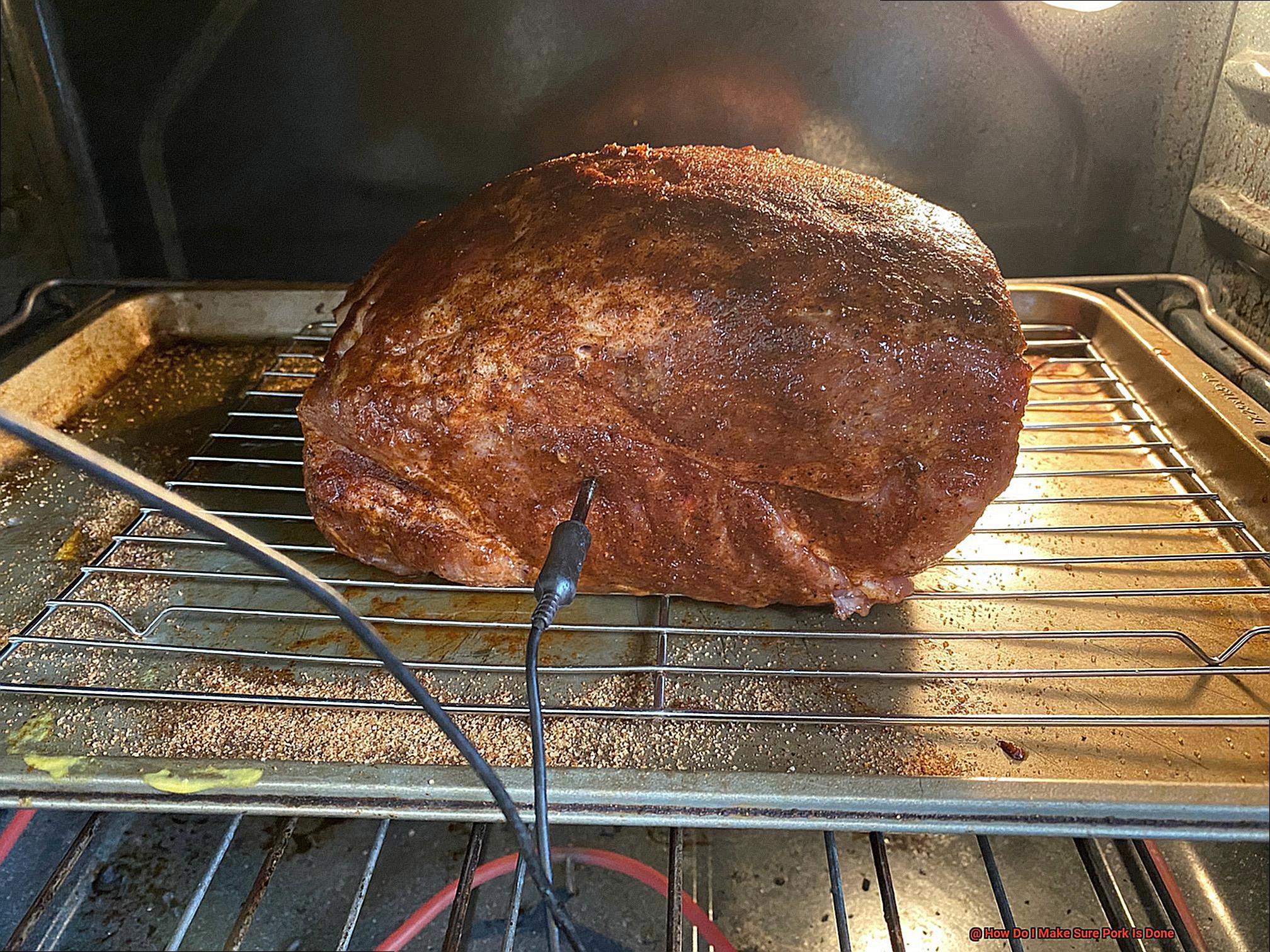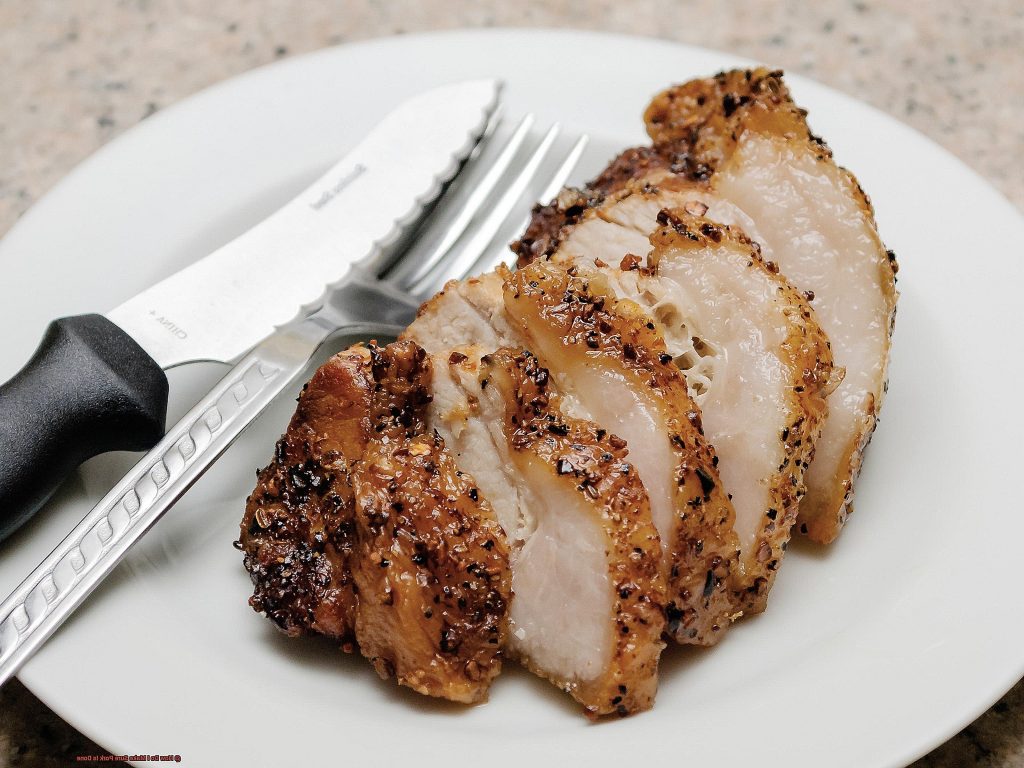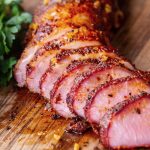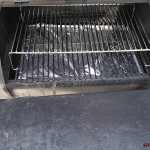Ah, the mouth-watering aroma of perfectly cooked pork. It’s a dish that can make even the pickiest of eaters drool. However, cooking pork to perfection can be a daunting task, especially for novice cooks. Pork is prone to bacterial infections like trichinosis and salmonella, making it crucial to ensure it’s cooked thoroughly. So how do you know if your pork is done?
First things first: forget about relying on cooking time or color to determine if your pork is ready to serve. These methods are unreliable and could put your health at risk. Instead, invest in a meat thermometer and check the internal temperature of your pork. This is the only surefire way to know if it’s safe to eat.
Another factor to consider is the cut of meat you’re cooking. Different parts of the pig require different cooking times and temperatures. For instance, leaner cuts like loin can be cooked at lower temperatures than fattier cuts like shoulder.
In this blog post, we’ll guide you through all the nitty-gritty details of properly cooking pork and determining when it’s done. We’ll cover everything from temperature ranges and essential tools to cooking methods for various cuts and pro tips for achieving succulent pork every time.
Whether you’re an experienced chef or just starting in the kitchen, grab a thermometer, roll up your sleeves, and let’s get cooking.
Contents
Why Is It Important to Make Sure Pork Is Cooked All the Way Through?
Pork is a beloved meat choice for many due to its versatility in recipes and delicious taste. However, it can also be a source of harmful bacteria and viruses such as Salmonella and Trichinella if not cooked properly.
Consuming undercooked pork can lead to food poisoning, which can cause symptoms ranging from mild stomach discomfort to life-threatening illnesses. This is especially true for vulnerable groups like pregnant women, young children, older adults, and individuals with weakened immune systems. That’s why it’s critical to cook pork thoroughly to kill any harmful bacteria and ensure that it’s safe to eat.
But cooking pork all the way through isn’t just about safety; it’s also about taste. Undercooked pork can be tough and chewy, making it unpleasant to eat. On the other hand, properly cooked pork is juicy and tender, making it a delight to enjoy.
So, how do you cook pork all the way through? The best way is to use a meat thermometer. According to the USDA, pork should reach an internal temperature of 145°F (63°C) to be considered safe for consumption while still retaining its flavor.
When using a meat thermometer, insert it into the thickest part of the pork, avoiding any bone or fat. Once it reaches 145°F (63°C) or higher, remove the pork from heat and let it rest for a few minutes before slicing.
Aside from using a meat thermometer, there are other ways to tell if your pork is cooked thoroughly. For instance, properly cooked pork should have clear juices instead of pink or red ones. It should also feel firm when pressed with tongs or a fork.
Different cuts of pork may require different cooking times and temperatures. It’s always best to consult a recipe or cooking chart for specific cooking instructions.
The Best Way to Ensure Pork Is Done: Using a Meat Thermometer
Using a meat thermometer is not only the most accurate but also the safest way to guarantee your pork is cooked to the correct temperature, and safe for consumption. To use it correctly, follow these simple steps:

First, insert the probe into the thickest part of the pork, being careful not to touch any bones. Bones can give an inaccurate reading, and we don’t want that. Make sure the thermometer is inserted at least 1 inch deep into the meat.
Next, read the temperature on the display. If it has reached 145°F or higher, congratulations. Your pork is ready and safe to eat. If it hasn’t reached this temperature yet, don’t panic – just continue cooking until it does.
It’s essential to note that different cuts of pork may require different cooking times and temperatures. For example, pork ribs may need to cook longer at a lower temperature than a pork loin. Consulting a cooking chart or recipe for specific cooking times and temperatures for your cut of pork is always a good idea.
Using a meat thermometer not only ensures that your pork is safe to eat but also helps prevent overcooking and drying out the meat. So invest in a good quality meat thermometer – it’s a game-changer for any home chef.
In conclusion, here are some key takeaways for ensuring your pork is cooked perfectly and safely:
- Use a meat thermometer to accurately determine when your pork is done.
- Insert the probe into the thickest part of the meat, being careful not to touch any bones.
- Read the temperature on the display – 145°F or higher means your pork is ready.
- Consult recipe-specific cooking times and temperatures for different cuts of pork.
- Using a meat thermometer helps prevent overcooking and keeps your pork juicy and delicious.
How to Use a Meat Thermometer
Cooking pork is an art that requires precision and care. To ensure that your pork is cooked thoroughly and safe to eat, using a meat thermometer is essential. Here’s how to use a meat thermometer correctly when cooking pork.
Choose the Right Type of Meat Thermometer
There are two types of meat thermometers, analog and digital. Analog thermometers have a metal stem and a dial that displays the temperature, while digital thermometers use electronic sensors to display the temperature on a screen. Digital thermometers are more accurate and easier to read, making them the better choice for cooking pork.
Insert the Probe into the Thickest Part of the Meat
To use a meat thermometer correctly, insert the probe into the thickest part of the meat, such as the center of a roast or chop. Ensure that the probe doesn’t touch any bone, which can give an incorrect reading.
Wait for the Thermometer to Stabilize
After inserting the probe into the meat, wait for a few seconds until the thermometer stabilizes and gives you an accurate reading. For pork, the minimum safe temperature is 145°F (63°C), but some people prefer to cook pork to a higher temperature for added safety.
Test Multiple Spots in the Meat
To guarantee that your pork is cooked thoroughly, test multiple spots in the meat with your thermometer. If the temperature is lower than recommended, continue cooking until it reaches at least 145°F (63°C). Testing multiple spots also ensures that your pork is evenly cooked throughout.
Clean and Calibrate Your Thermometer Regularly
After each use, clean your meat thermometer thoroughly with hot soapy water to avoid cross-contamination with other foods. It’s also crucial to calibrate your thermometer regularly to ensure accurate readings.
Different Cuts of Pork Require Different Cooking Times and Temperatures
Cooking pork can be a delicate dance. Each cut requires a different cooking time and temperature to achieve the perfect flavor and texture. It’s like creating a symphony; you need to hit every note at the right time to make something beautiful. In this article, we will explore why different cuts of pork require different cooking times and temperatures.
First and foremost, it’s crucial to understand that the thickness and fat content of the pork play a significant role in how the meat cooks. Generally, leaner cuts such as pork chops or tenderloin have less fat and can dry out quickly if overcooked. They require higher temperatures for shorter periods to avoid becoming tough and rubbery. Fattier cuts such as pork shoulder or ribs, on the other hand, need longer cooking times to break down the fat and become tender. Low-temperature, slow cooking is the key.
To ensure your pork is cooked properly, you must use a meat thermometer to check its internal temperature. The recommended temperature for pork is 145°F for whole cuts and 160°F for ground pork. Insert the thermometer into the thickest part of the meat, wait for it to stabilize, test multiple spots in the meat, and clean and calibrate your thermometer regularly. This will help you avoid undercooking or overcooking your pork.
Lastly, after cooking your pork, let it rest for a few minutes before serving. This allows the juices to redistribute throughout the meat, making it moist and flavorful. Cutting into the meat too soon will cause it to lose its juices. So, resist the urge to dig in immediately and give your pork some time to rest.
Other Visual and Tactile Cues for Properly Cooked Pork
Cooking pork to perfection requires both attention to detail and a certain amount of finesse. Although a meat thermometer is the most reliable way to check if pork is cooked, there are other methods that can help you determine if your pork is ready.
One of these methods is the color test. A perfectly cooked pork should have a slight blush of pink in the center, with clear juices running out. If you see pink or red juices, or if the meat is still pink in the center, then it needs more time on the stove or in the oven. On the other hand, if the pork has turned brown and looks dry, then it has been overcooked. By using a combination of color and touch tests, you can ensure that your pork is cooked just right.
The touch test involves pressing down on the meat with your finger or tongs to gauge its firmness. If it feels soft and squishy, then it’s still raw. If it’s firm but yielding, then you’re looking at medium-rare. If it’s firm with a bit of resistance, then it’s medium. And if it’s very firm with no give at all, then it’s well-done. The touch test can be a useful tool in determining whether your pork is undercooked, overcooked or just right.
It’s worth noting that after cooking your pork, you should let it rest for a few minutes before slicing or serving. This allows the juices to redistribute throughout the meat, resulting in a more tender and juicy final product. Simply cover your cooked pork with foil and let it sit for 5-10 minutes.
Tips for Ensuring Perfectly Cooked Pork Every Time
Pork is a popular protein choice that can be cooked in a variety of ways, from grilling to roasting. However, ensuring it is cooked properly is essential not only for taste but also for safety. Here are some tips to help you achieve perfectly cooked pork every time:
Use a Meat Thermometer
A meat thermometer is a must-have tool when cooking pork. The USDA recommends cooking pork to an internal temperature of 145°F (63°C) with a three-minute rest time before consuming. Insert the thermometer probe into the thickest part of the meat, making sure it doesn’t touch any bone or fat. Once the thermometer reads 145°F (63°C) or higher, remove the pork from heat and let it rest for a few minutes.
Avoid Overcooking
Overcooking pork can lead to dry and tough meat. Remove the pork from heat when it reaches an internal temperature of 140°F (60°C), as during resting, it will continue to cook and reach the recommended 145°F (63°C) temperature.
Choose the Right Cooking Method
Different cuts of pork require different cooking methods and times. Lean cuts like tenderloin and loin chops can be cooked quickly over high heat, while tougher cuts like shoulder or butt benefit from slow cooking methods like roasting or braising. Understanding the best cooking method for your cut of pork can help ensure optimal results.
Pay Attention to Color and Texture
Pork should have a slightly pink center when cooked to the recommended temperature, but should not be visibly raw or have any pink juices flowing from it. Overcooked pork can be dry and tough, so it’s important to be mindful of how long you cook your pork.
Rest Your Pork
After cooking, allow your pork to rest for a few minutes before slicing or serving. Resting allows the juices to redistribute throughout the meat, resulting in a more flavorful and tender pork dish.
Conclusion
Cooking pork can be a challenging task, especially for those new to the kitchen. Pork is susceptible to bacterial infections such as trichinosis and salmonella, making it essential to ensure that it’s cooked thoroughly. To guarantee that your pork is safe to eat, invest in a meat thermometer and check its internal temperature.
Relying on cooking time or color alone is unreliable and can pose health risks. Different parts of the pig require different cooking times and temperatures. For instance, leaner cuts like loin can be cooked at lower temperatures than fattier cuts like shoulder. Using a meat thermometer not only ensures safety but also helps prevent overcooking and drying out the meat.
Apart from using a meat thermometer, there are other ways to tell if your pork is cooked thoroughly. Clear juices instead of pink or red ones and feeling firm when pressed with tongs or a fork are indicators of well-cooked pork. After cooking your pork, let it rest for several minutes before slicing or serving to allow the juices to redistribute throughout the meat.
In conclusion, achieving perfectly cooked pork requires attention to detail and finesse. Use a meat thermometer, avoid overcooking, select the right cooking method, pay attention to color and texture, and rest your pork before serving.






